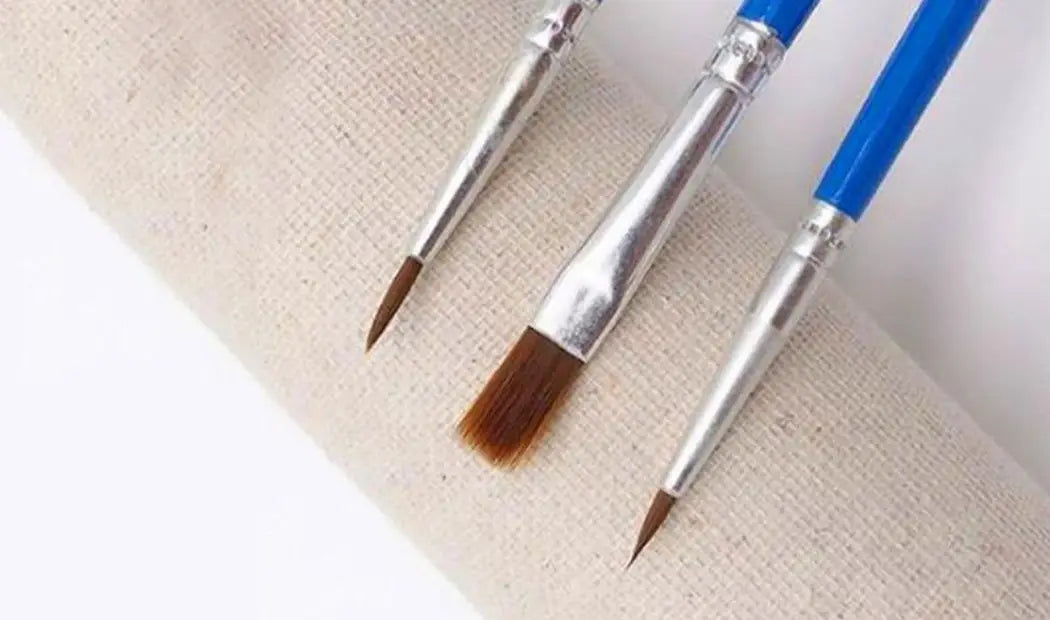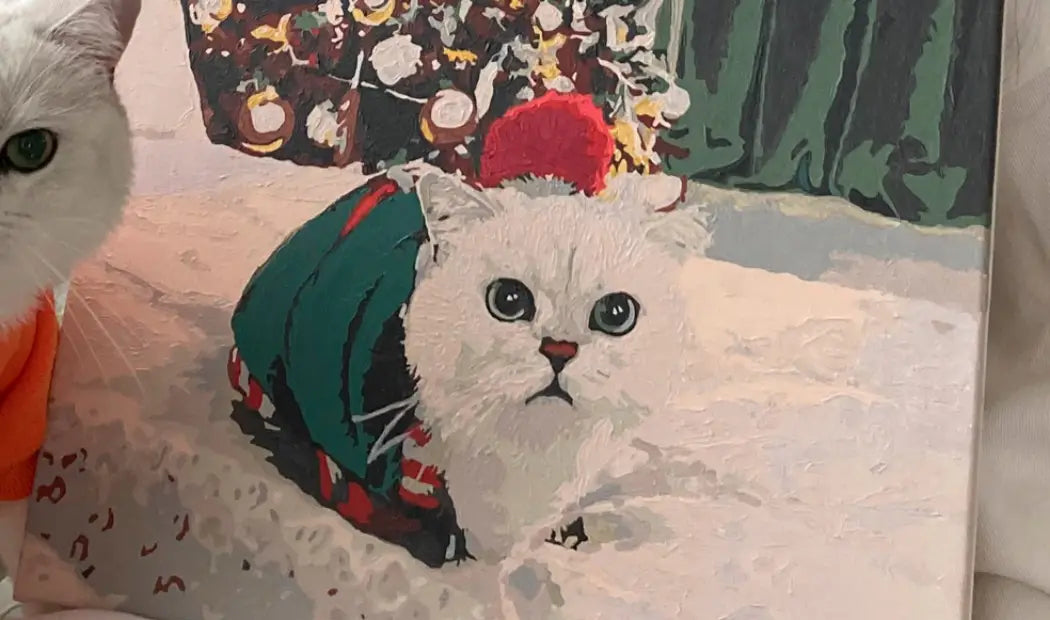
Pet Paint by Numbers Techniques for Beginners: Exploring Brush Strokes, Blending, and Detailing
Immerse yourself in the mesmerizing realm of pet paint by numbers techniques and embrace your inner artist. With every brushstroke, witness numbered canvases metamorphose into exquisite portraits that immortalize our beloved furry companions. This captivating artistic pursuit is especially ideal for beginners yearning to breathe life into their treasured pets' visages on canvas. Delve deeper into the mystifying world of brush strokes as you unravel the secrets behind blending colors harmoniously together, seamlessly bringing depth and dimension to your creations. Embark upon this imaginative journey where friendship intertwines with artistic prowess, allowing boundless expression through a palette filled with emotions.
1. Brush Strokes in pet paint by numbers
Types of Brush Strokes

When it comes to brush strokes, there are a variety of techniques you can use - One technique is the flat stroke, where you apply the brush flat against the surface in a straight line which creates a smooth mark. Another technique is the round stroke, which involves using circular motions to create softer shapes for creating fluid forms. If you're looking for more blended edges in animal painting, try using the filbert stroke. For adding texture, stippling strokes come into play here - these involve making small dots or dabs. Lastly, scumbling strokes give an illusion of broken texture by lightly dragging a dry brush over an area.
Pet paint by numbers brush stroke techniques
Here are some basic brush stroke techniques that you can commonly employ in pet portrait painting:
- Wet-on-Wet: This technique involves applying wet paint onto a wet surface, resulting in a smooth blending effect. The fluidity of the paint allows for seamless color transitions and softer edges.
- Wet-on-Dry: In contrast to the previous method, here artists apply wet paint onto a dry surface. This technique creates sharper edges and distinct outlines as the colors remain separate from one another.
- Dry Brush: With this approach, minimal amounts of paint are applied using quick strokes or light pressure on the canvas's textured surface—resulting in scratchy and uneven textures that evoke visual interest in your classic paint by number.
- Glazing: Artists use glazing by layering transparent paints over dry layers to achieve subtle changes in color value and create an illusion of depth through thin veils of translucent pigments.
- Sgraffito: A unique technique where artists scratch or scrape into an existing layer(s)of paint, revealing underlying colors. This adds intricate detail and texture to their pet portraits paintings while creating areas with contrasting tones.
Controlling brush pressure and creating different textures
Develop your brush skills by experimenting with various brushes and adjusting the pressure to achieve different textures. You can control the consistency of your paint by adding water or medium, which will create unique effects. Opt for a thicker consistency if you are aiming for bold strokes that add depth and dimension to your piece. Thinner paint, on the other hand, creates smoother finishes with less visible texture. If you want to enhance the overall texture in your artwork, experiment with different techniques such as stippling (applying dots or small marks) and round strokes. By incorporating these methods into your painting process, you can introduce diversity in texture that adds intrigue. Before applying these techniques directly onto pop art by numbers or pet portrait paintings, practice on scrap paper first.
2. Blending Techniques in paint by number pet
Color blending and its significance in pet portraits

Color blending is the technique of smoothly transitioning between different colors, creating a seamless transition. In pet portrait painting, color blending is essential for capturing the subtle variations and gradients in an animal's fur or coat. It adds depth, realism, and dimension to the artwork, making it visually appealing and lifelike. It allows you to convey the softness, volume, and individual characteristics of the animal's coat, enhancing the overall quality and realism of the paint your pet by numbers.
Wet-on-wet blending technique
The wet-on-wet blending technique is used to create smooth and seamless color transitions. To effectively use this technique, it's important to practice brush control with various brushes and experiment with different pressures to achieve desired textures. Adjusting the consistency of the paint by adding water or medium can also help in achieving specific effects. Combining different brush techniques in paint your pet by numbers like stippling for background and round strokes for details can add diversity to your artwork. Lastly, don't be afraid to explore tools beyond just brushes.
3. Adding Detail in paint by number pet
Importance of capturing the expression and personality of the pet
When creating custom pet portraits, capturing the expression and personality of the animal is crucial. Pets have unique facial features and mannerisms that make them special. By accurately portraying their expression, you can bring the painting to life and evoke a sense of emotional connection for the viewer. To capture the expression, observe the pet closely and study its facial features and pay attention to any distinctive markings or characteristics that make the pet recognizable. Incorporate these details into your artwork to create a faithful representation that reflects the pet's individuality.
Guide for painting realistic features

To begin, first carefully proceed with layering by using light washes of color to establish the overall form, gradually adding more specific details as you progress. Reference photos can be extremely helpful in capturing precise characteristics. Take advantage of these resources when seeking inspiration for accurate representation. Applying thin glazes is an effective technique for creating depth and achieving a realistic effect. This involves overlapping translucent layers of paint to capture variations in fur or skin tone in paint your pet by number.
Techniques for highlighting facial features and adding texture to fur
- Dry Brushing: Apply minimal amounts of paint on a dry brush and use subtle marks and strokes to create the appearance of fur in paint by numbers pet portraits.
- Feathering: This involves using small, quick strokes to mimic fine hair strands. Varying your pressure and direction will add depth and movement to the fur.
- Highlights and Shadows: When painting highlights and shadows, it's important to observe the lighting in your reference photo. Use lighter tones for areas where light hits directly on the fur, creating volume and brightness. On shadowed areas, apply darker tones to add depth.
- Fur Texture: To enhance the overall texture of your paint by numbers pet portraits even further, consider adding individual hair strands or details using a fine-tipped or liner brush. You can build up this effect gradually by working in layers.
- Reflective Highlights: For shiny surfaces like eyes or noses with reflective highlights, use a small brush or toothpick to carefully apply tiny dots of highlight color that capture the reflection of light.
Summing Up
Pet paint by numbers offers an exciting journey for beginners, exploring brush strokes, blending, and detailing. By mastering these techniques, you can elevate your artwork and create captivating custom pet portraits. Practice brush control, experiment with dilution, and study the pet's expression and personality. Pay attention to realistic features like eyes, noses, and fur textures. With patience and practice, you'll achieve stunning results that capture the hearts of both yourself and viewers. So, embrace the joy of custom pet paint by numbers with Pets by Numbers, let your creativity flourish, and bring furry companions to life on your canvas.

